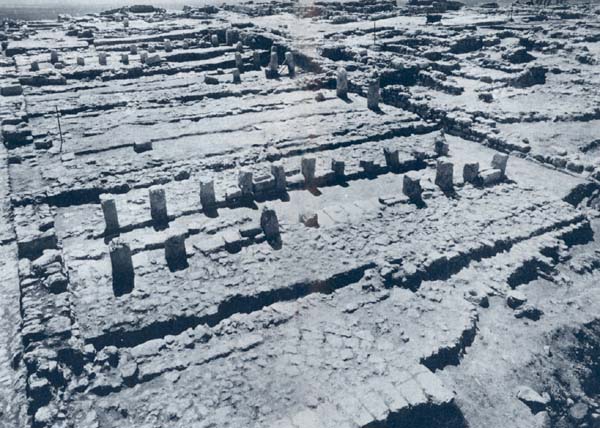Image Details

Courtesy of the Oriental Institute Museum, University of Chicago
Megiddo’s stables, tripartite structures that ham provoked considerable debate regarding their actual function, were indeed stables for the housing and conditioning of war-horses, according to a new study by John S. Holladay. The tripartite structure is compared of two rows of stalls separated by a center aisle; two lines of pillars mark the edges of the center aisle. In the photo these features can be seen most clearly in the rectangular stable that occupies the center of the picture. Two mangers, troughs from which the horses fed, lie between the pillars at center. Dated to the ninth century B.C., these stables were most likely built by King Ahab (871–852 B.C.).
Expanding on Holladay’s study, Lawrence E. Stager has shown that some domestic dwellings possessed stables an the ground floor of covered side-rooms. These stables within dwellings may be what Amos envisioned when he condemned “eating calves from the midst of the stall.” The calves-confined during fattening-produced meat that was especially tender. By referring obliquely to this delicacy, Amos condemned profligate feasting.
